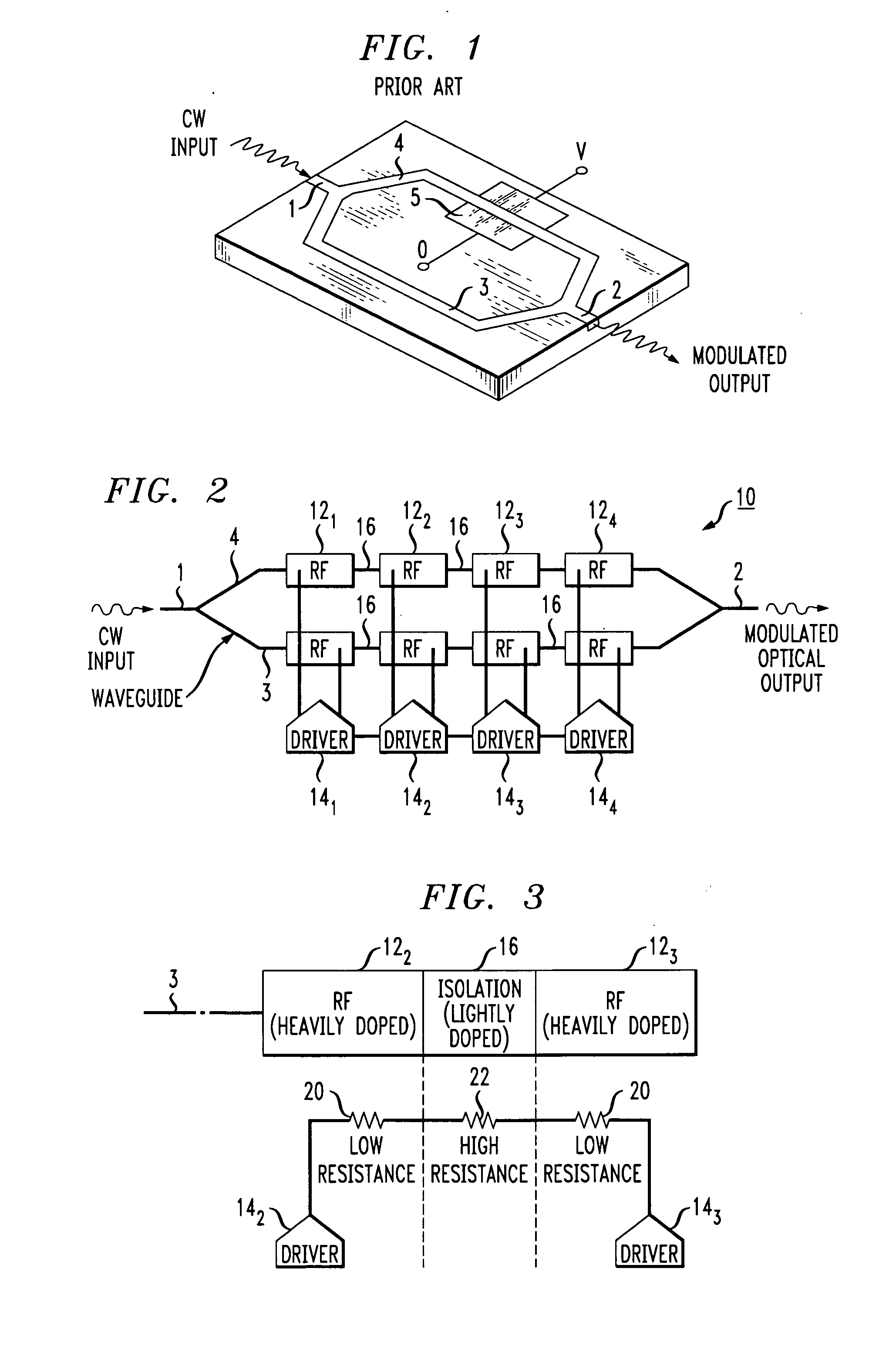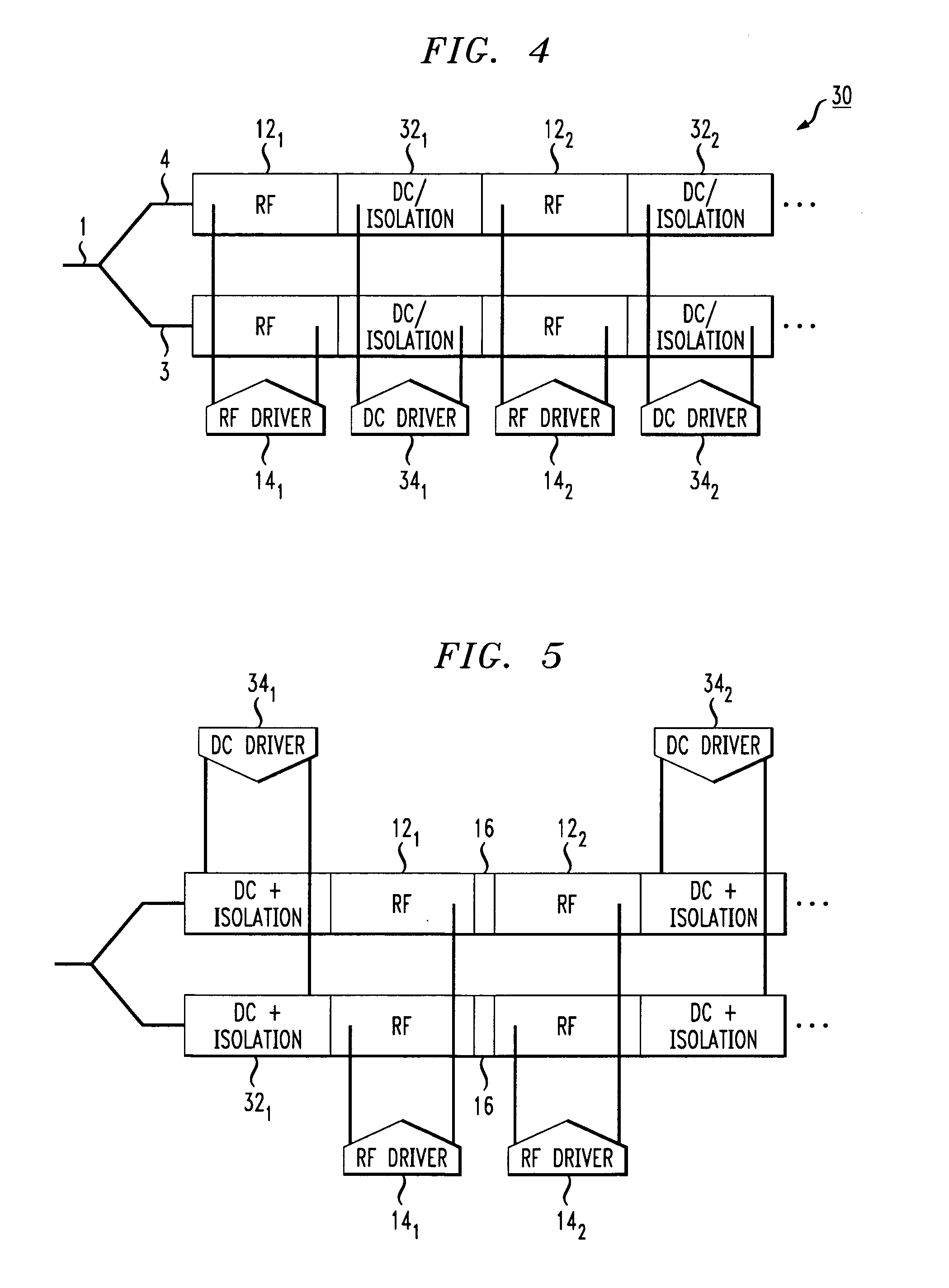Segmented optical modulator
a technology of optical modulator and segmented material, which is applied in the field of optical modulator, can solve the problems of adjusting the output amplitude, not being able to use lithium niobate-based optical devices in such a situation, and the dynamic behavior of the semiconductor material of the laser itsel
- Summary
- Abstract
- Description
- Claims
- Application Information
AI Technical Summary
Benefits of technology
Problems solved by technology
Method used
Image
Examples
Embodiment Construction
[0020]FIG. 1 illustrates an exemplary prior art Mach-Zehnder modulator that may be re-configured as shown below to utilize the segmented drive arrangement of the present invention. As shown, the prior art modulator comprises an input waveguide section 1 and an output waveguide section 2. A pair of waveguiding modulator arms 3 and 4 are shown and formed in one embodiment to include a capacitor-like structure.
[0021] In operation, an incoming continuous wave (CW) light signal from a laser source (not shown) is coupled into input waveguide section 1. The CW signal is coupled into waveguide arms 3 and 4, wherein the application of an electrical drive signal to these arms will provide the desired phase shift to modulate the optical signal, forming a modulated optical output signal along output waveguide 2. A pair of electrodes 5 are illustrated in association with modulator arm 4 and used to provide the electrical drive signal to arm 4. A similar pair of electrodes may be associated with...
PUM
 Login to View More
Login to View More Abstract
Description
Claims
Application Information
 Login to View More
Login to View More - R&D
- Intellectual Property
- Life Sciences
- Materials
- Tech Scout
- Unparalleled Data Quality
- Higher Quality Content
- 60% Fewer Hallucinations
Browse by: Latest US Patents, China's latest patents, Technical Efficacy Thesaurus, Application Domain, Technology Topic, Popular Technical Reports.
© 2025 PatSnap. All rights reserved.Legal|Privacy policy|Modern Slavery Act Transparency Statement|Sitemap|About US| Contact US: help@patsnap.com



